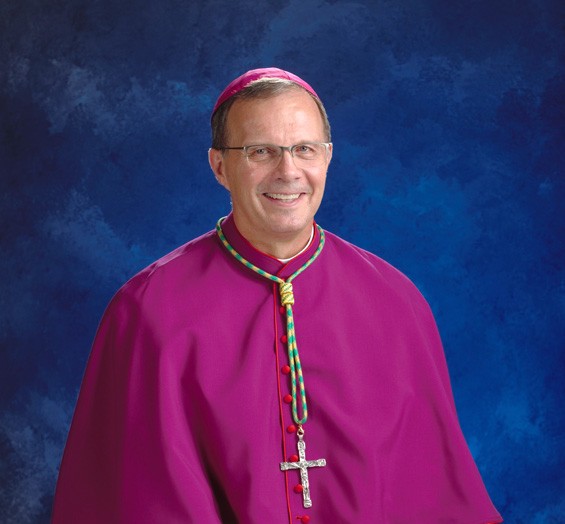Bishop: Tree House
October 15, 2019

Given the abundant gestures of hospitality, welcome, and the promises of prayers and support offered to me in the weeks before and after my ordination and installation as your 10th bishop, if I don’t recall the feeling of being overwhelmingly loved for the next—God willing—16 years, then there’s something wrong with me! I remain truly indebted and grateful to all who in any way planned, volunteered and participated in what were truly sublime and Spirit-led liturgies. I know many guests and friends from outside the Des Moines diocese were tremendously impressed with what they experienced. I also realize it will probably take me months and maybe years to comprehend what transpired as I was ordained a successor to the apostles and was grafted into this local church as its shepherd.
I was privileged in early October to celebrate Mass at the Basilica of St. John to commemorate the 30th anniversary of this church being elevated to the distinction of a minor basilica—which took place 10 years after the historic visit of now St. John Paul II to Living History Farms. I was prompted to recall the work of German forester Peter Wohlleben, in his book, The Hidden Life of Trees: What They Feel, How They Communicate. He explores the social life of trees in terms drawn more from anthropology than horticulture: trees have “social needs, pass on knowledge to the next generation, and grow old with dignity.” But in order to do so, they must cooperate not only with each other, but with other species, as is the case with the vast root networks, where tree depend on fungi for the delivery of nutrients in the “wood wide web” of underground relations that is likened to a nervous system. And at the upper level of life, community membership is taken into account. “The average tree grows its branches out until it encounters the branch tips of a neighboring tree of the same height.” It doesn’t grow wider, encroaching on space and light already spoken for, but reinforces branches it has already extended—not a competitive shoving match, but a sort of natural friendship where each is careful not to take away from the other—while likewise remaining connected at the roots until they might even die together.
Not only the basilica, but every parish community, with all its beautiful features, represents a sort of niche forest. People of various ages—those still growing, trying to extend their branches, or those who seek to reinforce the strength of what they’ve already developed, and some trying simply to survive—all are vital to the life of the church. Each member has the unique capacity to make sacrifice and serve God to a degree that matters more than any costly building materials. In God’s eyes, people are the most precious ornaments decorating a church; Jesus himself continues to nourish us, extend the branches of his Spirit life and tender his love to us, and fortify us with the strength to bear the Gospel to the world—a world that often seems like a tangle of apathy, unbelief, violence, and fear. In the Mass and other liturgies, we collaborate with Christ in his saving act of loving unto death on a cross. He feeds us not with organic nutrients but with his own Body and Blood in a profound act of gratitude that the Father has given us to him.
The Church’s pastors taught about the nature of the Church in the Second Vatican Council’s Lumen Gentium/The Light of Humanity [LG]. I paraphrase slightly, but they urge us to appreciate that upon all the baptized laity rests the noble duty of working to extend the divine plan of salvation to persons of every epoch and land. . . . They do so by offering spiritual worship for the glory of God, as well as by their prayers and endeavors, by married and family life, daily occupations [including study], physical and mental relaxation if carried out in the Spirit, and even in the hardships of life. All of these are spiritual sacrifices linked together in the spiritual, worldwide web enacted in the Eucharist, consecrating the world itself to God (see LG nn. 34-35).
Whether we belong to the basilica or another urban parish, or to a rural faith community, we resist any tendency to think that we are special, or any urge to get in a “shoving match” with other trees, other niches in the “forest” that is the Diocese of Des Moines. Maybe we are a bit taller (or even wearing a pointy miter!), older, more widely extended, or come from different genetic or cultural lines, but we are humbled when we recall that these distinctions are not to set us against each other; they are meant to contribute to the vitality of all the members of the community. This happens when we heed what St. John Paul II commended us to do 40 years ago: to share the fruit of our labors, to contribute to others the knowledge we have gained, to promote development and defend the right to work of both rural and city folks alike. We bring ourselves and engage a loving community where nature is revered, burdens are shared, and the Lord is praised in gratitude.
Again, I have been blessed to be grafted to you; may we continue to offer to others the same receptive attitude that you extended to me, so that all might flourish in the forest of Christ’s life.